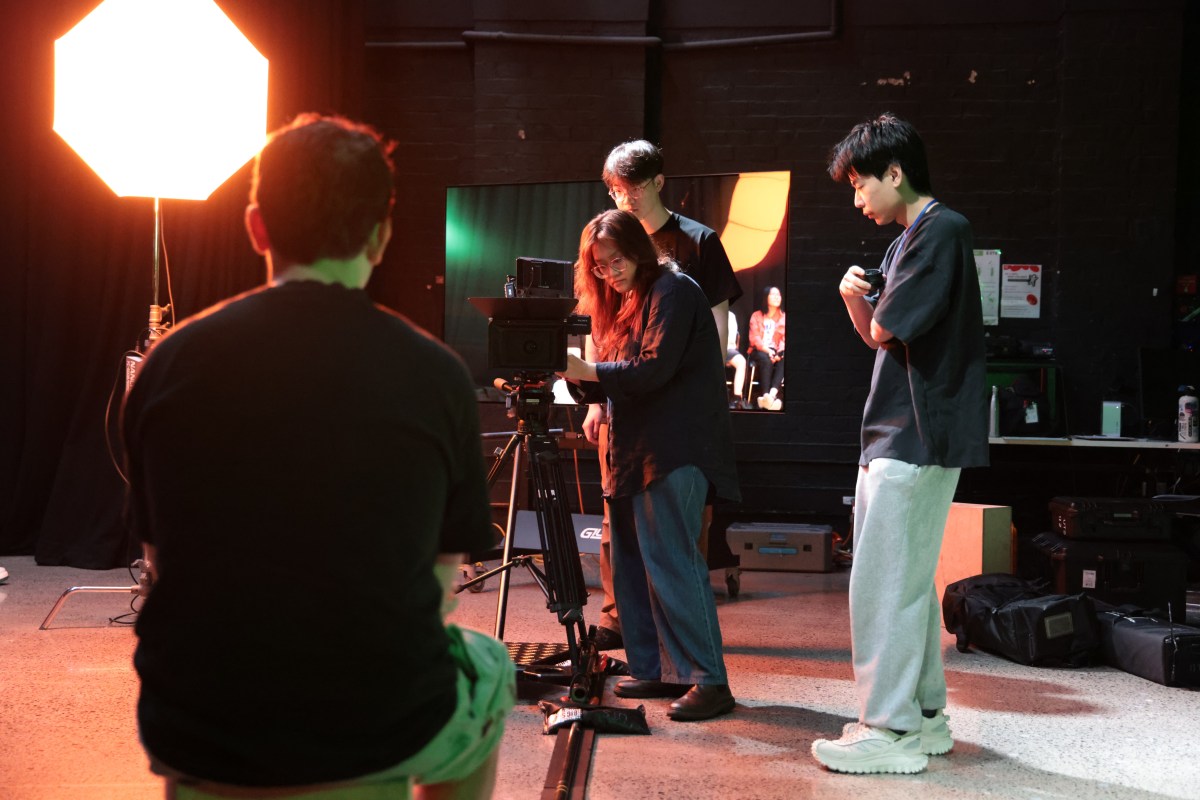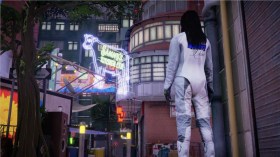The University of Technology Sydney (UTS) understands that with the rapid rise of AI, virtual production and vertical videos, not only are the ways people make film and TV changing, but so too are the ways we consume them.
For those looking to build or extend their career in creative screen production, adapting to these technological and cultural shifts is critical. To meet this demand, the University of Technology Sydney (UTS) has introduced two new postgraduate offerings: the Graduate Certificate in Screen Arts and Production: Drama and the Graduate Certificate in Screen Arts and Production: Documentary.
Designed for emerging and mid-career professionals, the courses combine practical craft skills with an understanding of the new technologies driving change across the industry.
UTS Screen Arts and Production: quick links
‘We are future focused at UTS, and technology’s a key part of that,’ says Associate Professor Alex Munt, a filmmaker and academic at UTS. ‘Our researchers in the UTS Creative Practice Research Group are exploring AI filmmaking, with a research-teaching nexus arriving in the classroom the next week.’
The future of filmmaking is transforming quickly, and UTS doesn’t want to leave students behind. The new Graduate Certificates, in Drama and Documentary, consolidate screen industry practices whilst exploring new frontiers.
Balancing traditional filmmaking with new tech

The changes facing the Australian screen sector are broad and complex. International streaming platforms continue to dominate distribution, while policy debates around local content quotas highlight the importance of Australian stories. Simultaneously, short-form and vertical video are now central to global storytelling, particularly on mobile platforms.
Yet, cinema remains resilient. Festivals such as the Sydney Film Festival (SFF) are recording record attendance, while alternative screening events are continually drawing audiences to warehouses and unconventional venues to explore cutting-edge cinema. The mix of old and new formats creates a rich but challenging environment for anyone trying to establish a career in the screen industries.
According to Munt, success today means being grounded in core filmmaking skills while remaining adaptable. ‘You need to understand the complexity of contemporary screen production and feel confident working across different formats and platforms,’ he says.
‘The new Graduate Certificates are really aimed at people not only from a film-related academic backgrounds, but also those with industry experience, supporting people in a fast-changing industry in flux, both technologically and in the landscape of streaming media and online moving image content.’
Building the next generation of screen professionals at UTS
The two new Graduate Certificates respond directly to this need. The Graduate Certificate in Screen Arts and Production: Drama is tailored to those who want to refine their storytelling skills for narrative film, television, and new scripted formats. Students cover script development, directing, producing, and working with actors – while also gaining exposure to emerging tools such as AI-assisted workflows and virtual production.
The Graduate Certificate in Screen Arts and Production: Documentary, on the other hand, focuses on ‘unscripted’ storytelling across traditional and contemporary platforms. From short observational films to multi-platform documentary projects, students learn to develop, produce, and distribute work that connects with diverse audiences.
Both programs emphasise hands-on, practice-based learning. Students engage in projects that mirror real-world production workflows, while also developing the critical and creative thinking required to navigate an industry in transition.
‘The graduate certificates are a value-add in terms of becoming more job ready, whether you’re interested in scripted or unscripted content,’ says Munt.
Munt points to the three key areas of screen production being reconfigured today: screen development, production, and post-production. Traditional skills in screenwriting and producing, screen production, and editing remain essential, but tools such as real-time rendering, green screen, and generative AI will rapidly changing how creative teams operate.
‘Education has to evolve alongside these tools,’ Munt explains. At UTS, students gain access to industry accredited skills and workflows whilst being encouraged to experiment – testing new workflows, generating visuals, or integrating AI – all while grounding their work in strong storytelling principles for the screen.
The industry partnerships, core to the Graduate Certificates, strengthen this approach. UTS collaborates with ARRI (cinematography), AVID (editing) and the Australian Directors’ Guild, ensuring students are exposed to both established industry practices and cutting-edge innovations.
‘Our students sit right next to members of the Australian Directors Guild (ADG), the peak body that represents Australian screen directors, and are able to ask them questions and unpack the role of the contemporary screen director, reflected in assessment work,’ says Munt. UTS and the ADG deliver a series of ‘Directors’ Deep Dives’ where students engage with Australian directors successful on the international stage, in film and television production.
Pathways into the industry with UTS
One of the strengths of the Graduate Certificates is their flexibility. They can be completed as standalone qualifications for those seeking targeted upskilling, or serve as a pathway into the UTS Master of Screen Arts and Production. This means students can choose to expand their studies into a broader postgraduate degree if they wish.
‘It’s a flexible program,’ emphasises Munt. ‘Meaning in terms of full or part time, flexible in terms of entry, and whether or not you’ve come through an undergraduate degree or have screen industry experience.’
Career outcomes are diverse. Graduates may pursue traditional roles such as writer, director, producer or editor, or explore emerging opportunities in immersive media, data wranglers, or creative leads in branded content, streaming and immersive media.
Australia’s screen industry is currently benefitting from government support, including the NSW Government’s $380 million screen and digital games package. With increased international production activity and renewed investment in local content, demand for skilled creatives is only expected to grow.
For Munt, this makes it the right moment to offer these new programs. ‘We’re seeing more creative roles and work opportunities than ever before,’ he says. ‘The key is to balance strong storytelling with new production and post-production tools, and to connect education with industry through internships, mentoring and networks.’
The big UTS pitch
The Graduate Certificates in Drama and Documentary are both structured to be completed in under a year of part-time study. For working professionals, this offers a manageable way to develop new skills without stepping away from current projects.
For those drawn to scripted work, the Drama specialisation provides a deep dive into story and performance. For those interested in real-world stories and impact-driven projects, the Documentary specialisation offers the tools to develop compelling, socially engaged work.
‘The value of something like a Graduate Certificate is in the curriculum and finessing your practice-oriented skills,’ says Munt, ‘but it’s also about that network of people you’ll sit side by side with, and go on to have long-term industry relationships with.’
Both programs are united by one goal: preparing students to succeed in an industry where technology, audiences and opportunities are constantly shifting.
Applications for autumn intake are now open. For more information about the UTS Graduate Certificate in Screen Arts and Production: Drama and the UTS Graduate Certificate in Screen Arts and Production: Documentary, visit the UTS website.






